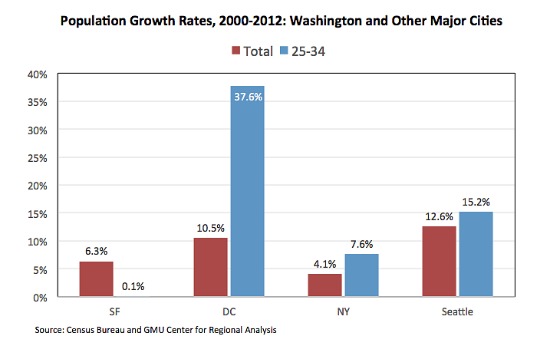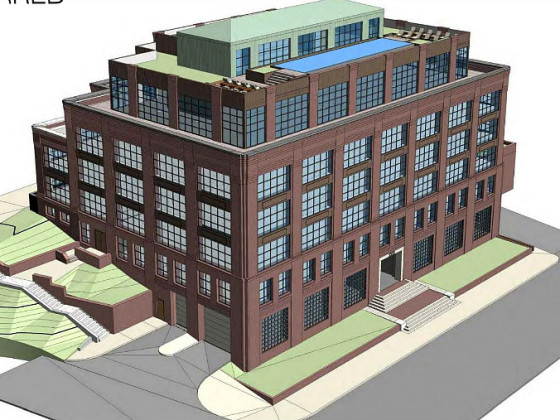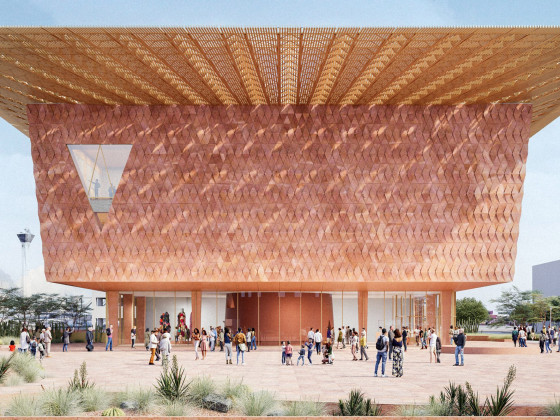What's Hot: Nearly $1 Million An Acre: Pricey Land Sale Near Dan Snyder's Alexandria Home Closes Out 2025
 Researcher: DC's Young Professionals Will Drive Micro-Unit Growth
Researcher: DC's Young Professionals Will Drive Micro-Unit Growth
✉️ Want to forward this article? Click here.

The DC area could use 10-20,000 more micro-units over the next decade to support an influx of young professionals with low- to moderate-incomes, a researcher told a crowd at a conference on the small apartments on Wednesday.
Between 2010 and 2020, the region’s population of adults aged 25-34 is expected to increase by 200,000, said David Versel, a researcher for George Mason University. At the same time, the growth of high-wage jobs is decreasing, so most of those adults won’t be making very much money. And most of them will likely be single.
Enter the micro-unit.
“Purely on what people earn, what can they afford, what does the market bear, the sweet spot in the [apartment] market over the next 15-20 years is going to be in that 275-to-430 square foot range,” Versel said to a group of architects, developers and others at an AIA|DC conference focused on the topic of micro-units and their feasibility in the area.

Layout of a micro-unit on the boards for New York City.
As the region’s job market weakens, a national trend exacerbated here by the shrinking federal government, incomes are going down. While most of the new apartment buildings going up in the DC area are classified as Class A, the young, single and unattached people planning to move to the area will do so for jobs that earn low to moderate incomes. These young newcomers generally won’t be able to afford rents eclipsing $1,750 a month, Versel’s data show. Affordability, population growth and a lack of rental inventory could conspire to create real demand for micro-unit developments in the DC area, he argued.
Growth rates for the 25-34 year-old set in the DC region were far higher than those of San Francisco, New York City and Seattle between 2000 and 2012, data show. During that period, DC’s growth rate for this age group was 37.6 percent; the closest rate was Seattle’s, which had a 15.2 percent growth rate. But unlike in Seattle, housing isn’t being built in the DC area to meet the demands of that population: mainly small housing suitable for singles without a lot of stuff.
To make that point, Versel presented data showing that roommate living situations rose 50 percent in DC proper between 2000 and 2012, while the number of people living alone dropped. In Seattle, roommate living situations have risen about 7 percent, while the number of those living alone has gone up 15 percent, a reflection of that city’s growing number of single-room occupancy projects.
See other articles related to: dc micro units, micro units
This article originally published at http://dc.urbanturf.production.logicbrush.com/articles/blog/researcher_dcs_young_professionals_will_drive_micro-unit_growth/8172.
Most Popular... This Week • Last 30 Days • Ever

Today, UrbanTurf offers a brief explanation of what it means to lock in an interest r... read »

The 30,000 square-foot home along the Potomac River sold at auction on Thursday night... read »

An application extending approval of Friendship Center, a 310-unit development along ... read »

A key approval could be coming for a proposal to convert a Georgetown office building... read »

Capital Bikeshare breaks a record; Trump potentially legalizes weed sales in DC; and ... read »
DC Real Estate Guides
Short guides to navigating the DC-area real estate market
We've collected all our helpful guides for buying, selling and renting in and around Washington, DC in one place. Start browsing below!
First-Timer Primers
Intro guides for first-time home buyers
Unique Spaces
Awesome and unusual real estate from across the DC Metro














